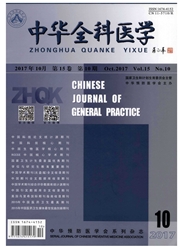

 中文摘要:
中文摘要:
目的分析山东省立医院门诊及住院患者乙肝五项定量检测结果,了解患者的乙肝感染状况,为乙肝的防治提供理论依据。方法采用电化学发光免疫分析法对2011—2013年226 193例门诊及住院患者进行乙肝五项定量检测,分别按年份、性别、年龄和乙肝五项模式进行分组,应用SPSS 21.0统计软件进行统计分析。结果共检出HBs Ag阳性14 069例,HBs Ag阳性率为6.22%(14 069/226 193)。2011—2013年HBs Ag阳性检出率分别为6.64%(4974/74 959)、6.18%(4410/71 399)、5.87%(4685/79 835),呈逐年下降趋势。男性HBs Ag阳性检出率为7.43%(8855/119 181),明显高于女性的4.87%(5214/107 012)。0~19岁年龄组HBs Ag阳性率最低,为1.28%(364/28 355);30~39岁年龄组HBs Ag阳性率最高,为8.21%(2694/30 129)。共检出12种乙型肝炎病毒感染模式,"乙肝小三阳"检出率最高,为60.63%(8530/14 069);其次为"乙肝大三阳",检出率为26.05%(3665/14 069);再次为1、3、4、5阳,1、5阳,1、2、4、5阳,1、2、3、5阳,检出率分别为5.52%(777/14 069)、2.84%(400/14 069)、2.04%(287/14 069)、1.26%(177/14 069);还检出了6种罕见模式:1阳,1、2、3、4、5阳,1、3阳,1、2、5阳,1、2阳,1、2、3阳,检出率均低于1%,分别为0.80%(113/14 069)、0.46%(65/14 069)、0.23%(33/14 069)、0.08%(11/14 069)、0.07%(10/14 069)、0.01%(1/14 069)。结论山东地区乙肝感染具有性别差异、年龄差异,且呈逐年下降趋势,感染模式以小三阳和大三阳为主,多种感染模式并存。
 英文摘要:
英文摘要:
Objective To analyze the quantitative detection of hepatitis B virus(HBV) in the patients from Shandong Pro- vincial Hospital, investigate the infection status of HBV in Shandong area, and provide theoretical basis for the prevention and treatment of hepatitis B. Results The quantitative detection of hepatitis B virus by the electrochemiluminescence im- munoassay(ECLIA) was performed in 226193 outpatient and inpatient from 2011 to 2013. The cases were grouped by year,gender,age and hepatitis B model. SPSS 21.0 statistical software was used for the statistical analysis. Results The total proportion of patients with HBsAg-positive chronic hepatitis B was 6.22% ( 14 069/226 193 ), by year was 6.64% (4974/74 959) in 2011,6.18% (4410/71 399) in 2012 and 5.87% (4685/79 835 ) in 2013, with a decreased inci- dence year by year. The proportion of males with HBsAg-positive chronic hepatitis B was higher than that of females (7.43% vs. 4.87% ,P 〈0.05). In different age groups,the proportion was lowest in 0-19 years old group( 1.28% ) ,and highest in 30 -39 years old group(8.21% ). There were 12 infection models of HBV in this study,which included the HBsAg + HBeAg + HBcAb positive (60.63 % ), HBsAg + HBeAb + HBcAb positive (26.05 % ), HBsAg + HBeAg + HBe- Ab + HBcAb positive ( 5.52% ), HBsAg + HBcAb positive ( 2. 84% ), HBsAg + HBsAb + HBeAb + HBcAb positive (2.04%), HBsAg + HBsAb + HBeAg + HBcAb positive ( 1.26% ), HBsAg positive ( 0. 80% ), HBsAg + HBsAb + HBeAg + HBeAb + HBeAb positive ( 0.46% ), HBsAg + HBeAg positive ( 0. 23% ), HBsAg + HBsAb + HBcAb positive (0.08 % ), HBsAg + HBsAb positive (0.07%), HBsAg + HBsAb + HBeAg positive (0.01% ), Conclusion The propor- tion of patients with HBsAg-positive chronic hepatitis B in Shandong has various in gender and age, and it begins to de- crease year by year. The HBsAg + HBeAg + HBcAb positive and HBsAg + HBeAb + HBcAb positive were
 同期刊论文项目
同期刊论文项目
 同项目期刊论文
同项目期刊论文
 期刊信息
期刊信息
